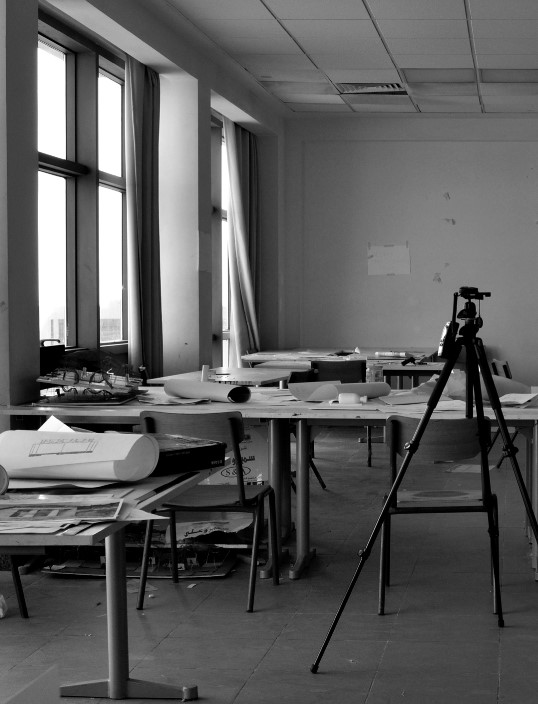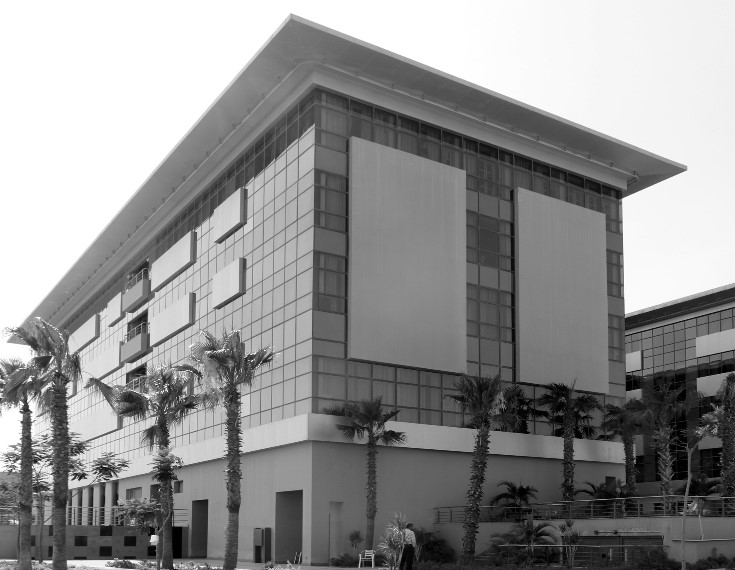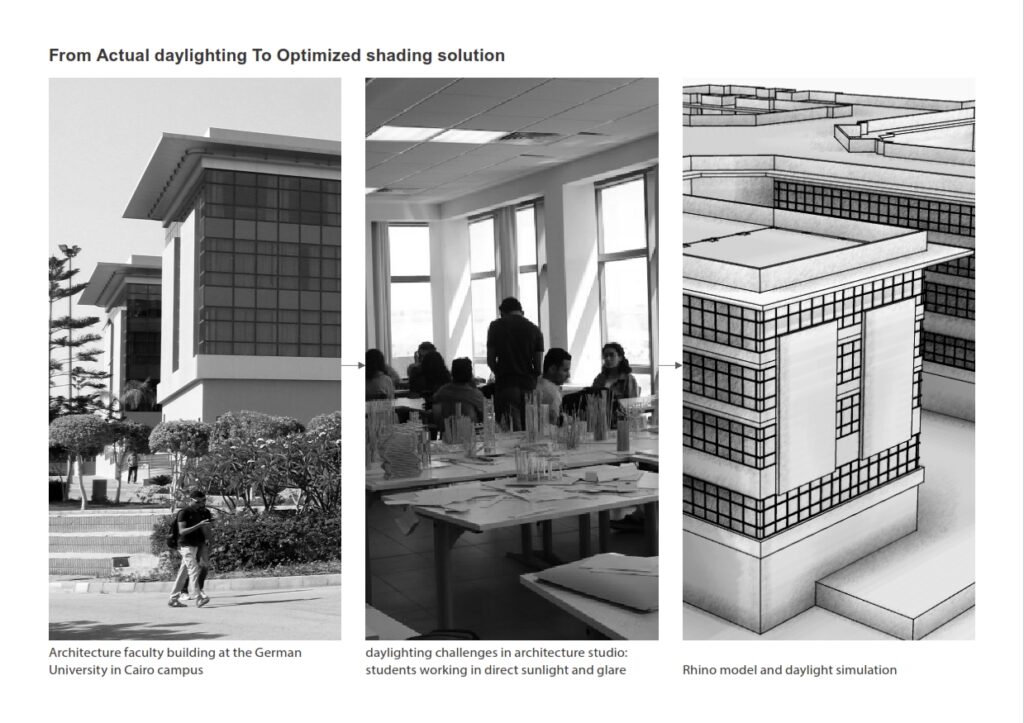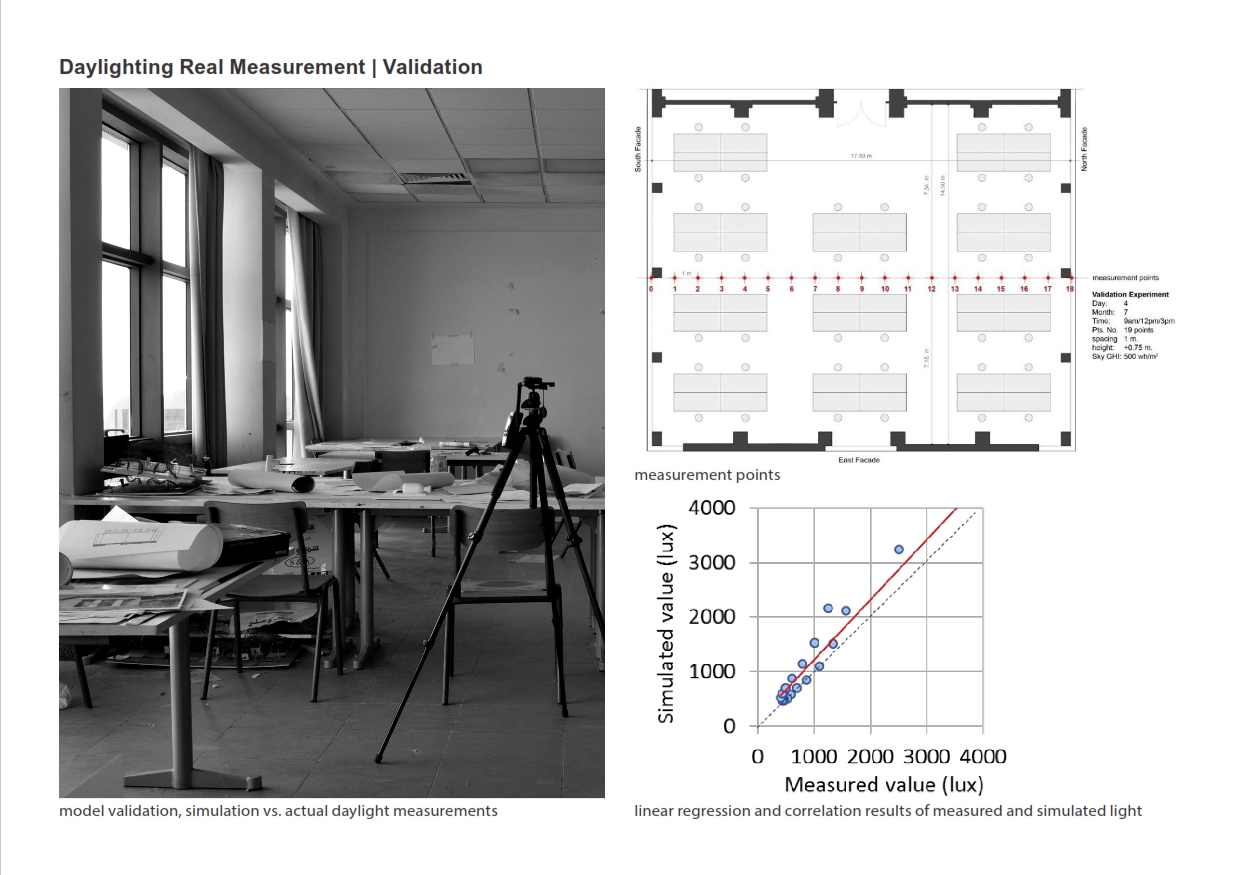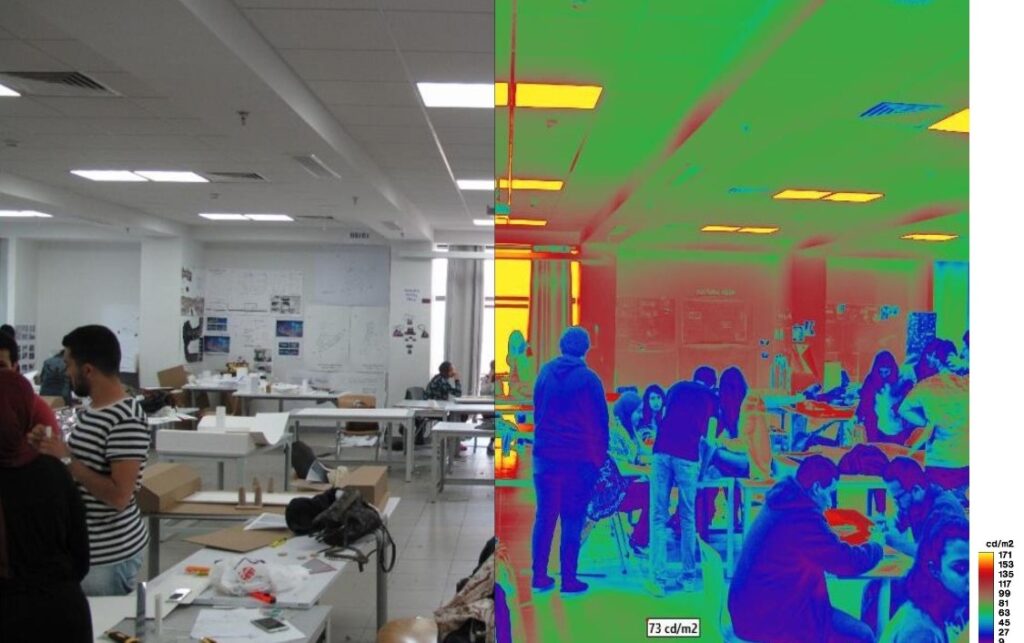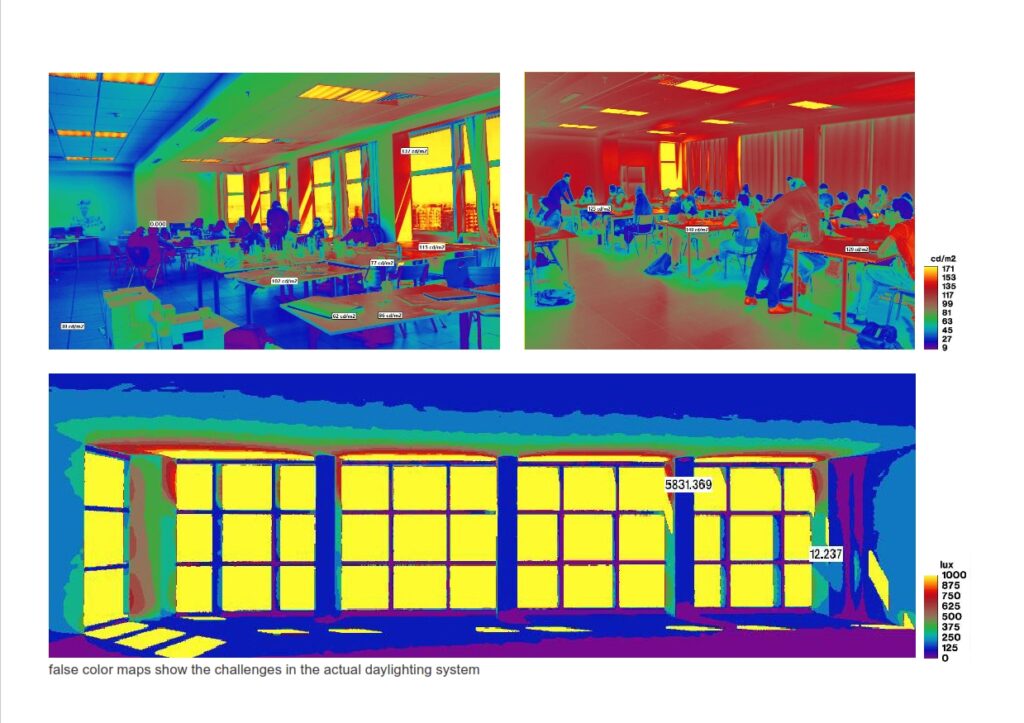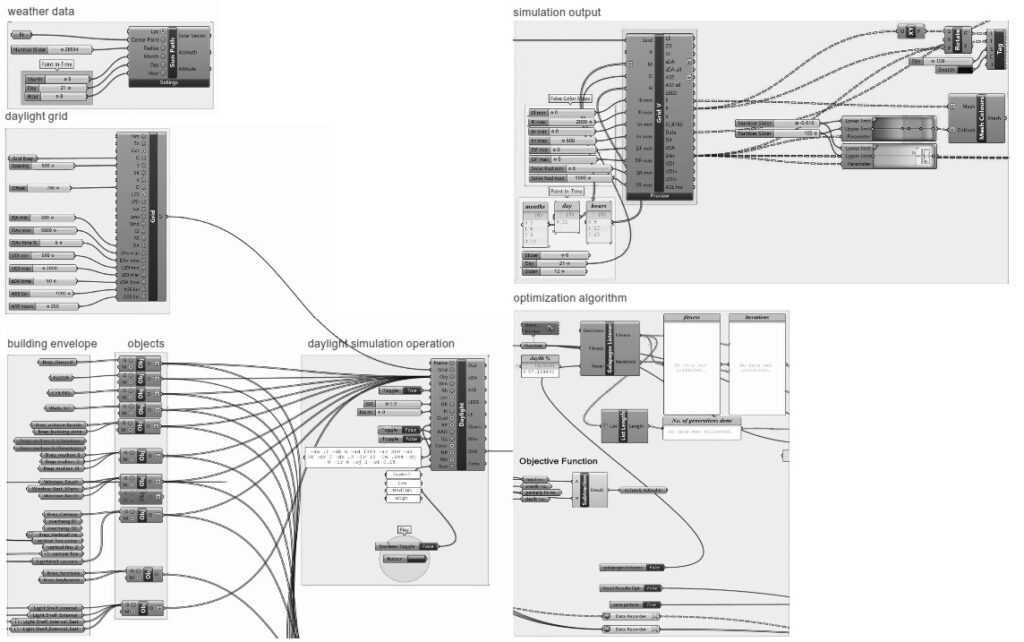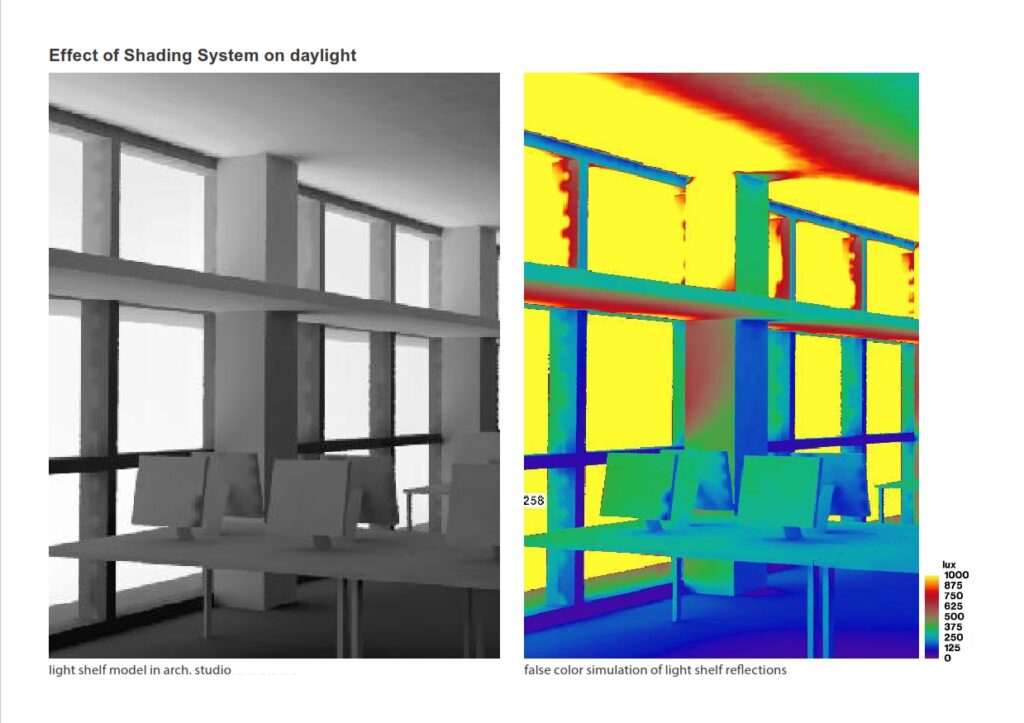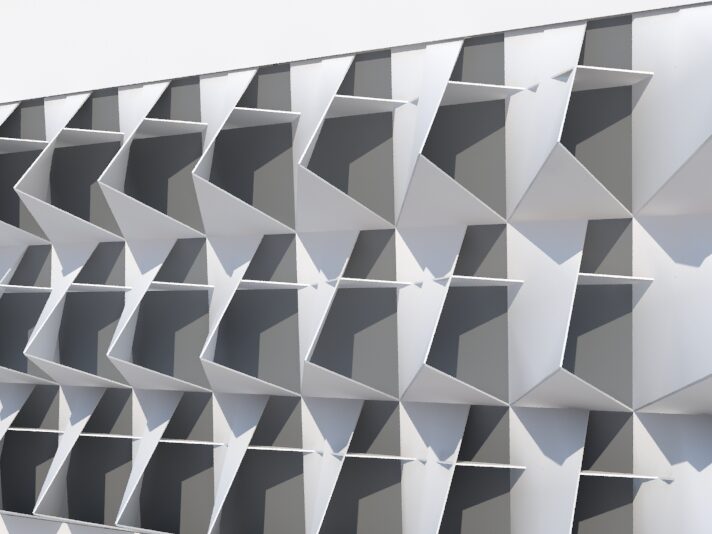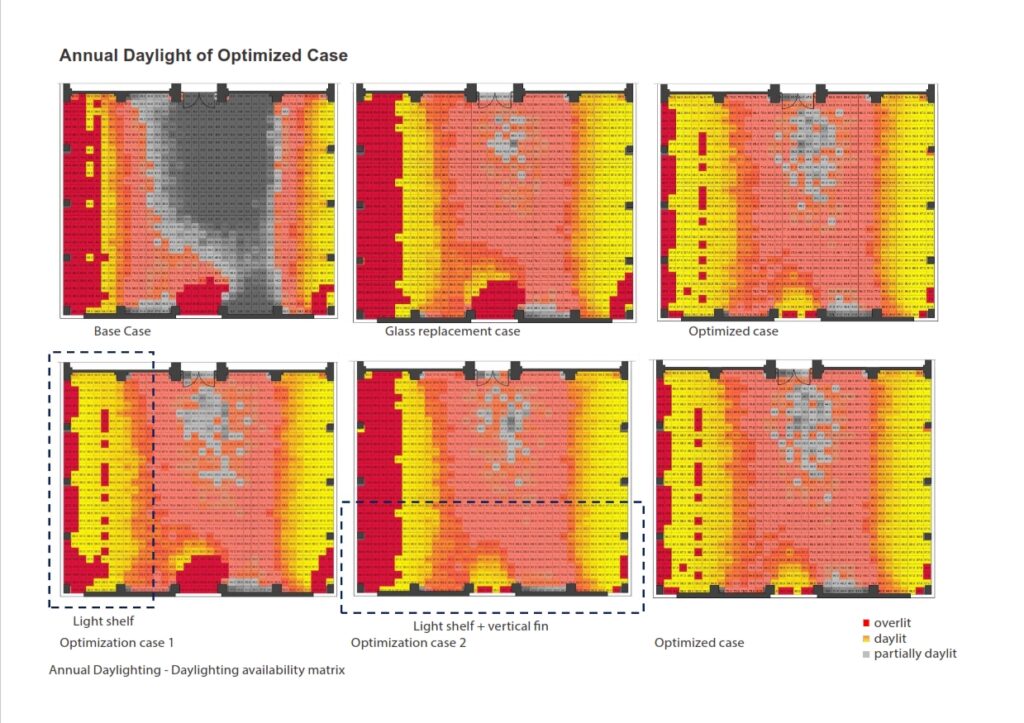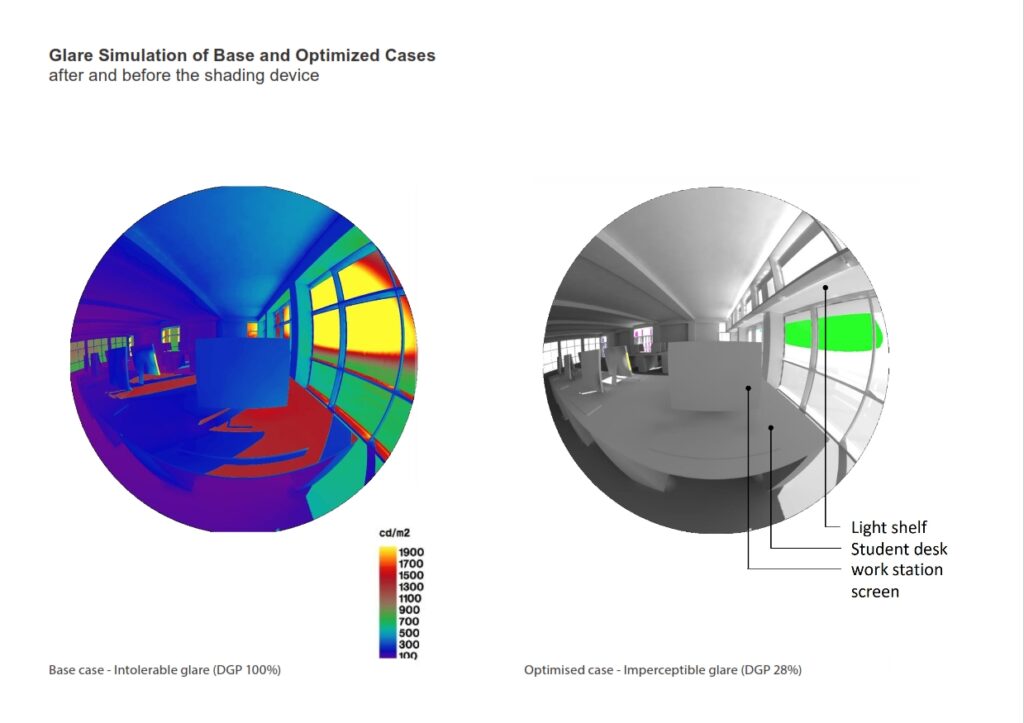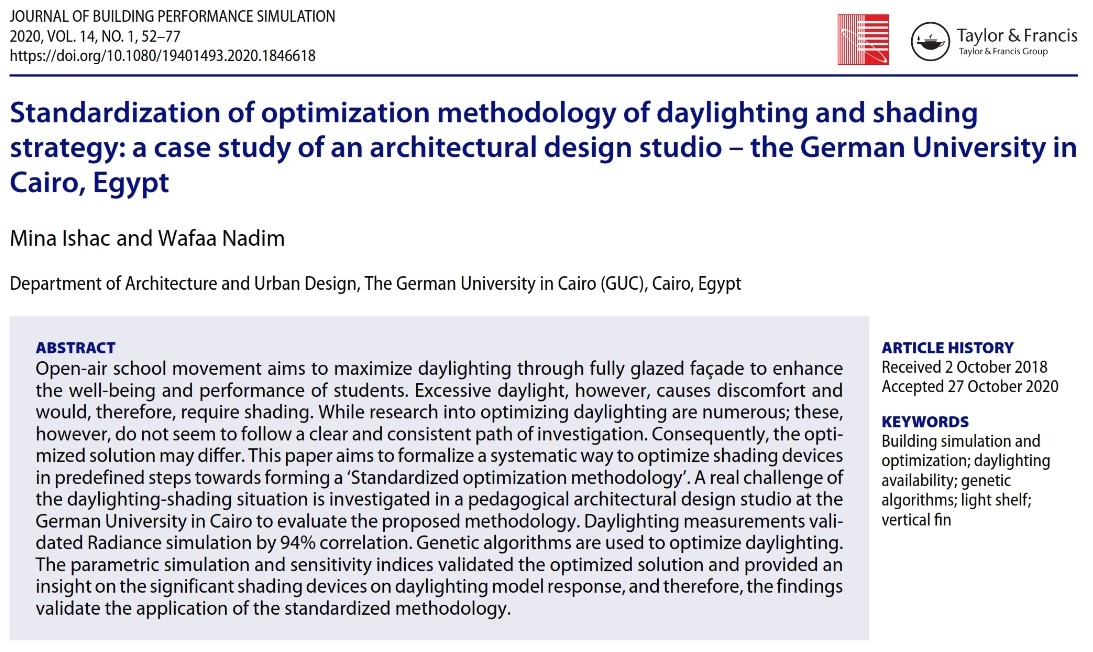Masters
Optimizing Daylighting and Shading Performance in Educational Settings in Egypt using Evolutionary Genetic Algorithms
German University in Cairo
open air school movement aims to maximize daylighting through glass facades to enhance the well-being and performance of students. Yet, excessive daylight causes discomfort and would, therefore, require shading. My masters investigated different daylighting and shading strategies used in classrooms. This was followed by formalizing a systematic approach to optimize shading devices in predefined steps towards forming a ‘standardized optimization methodology’ as published in my manuscript in the Journal of Building Performance Simulation. A real challenge in the daylighting and shading situation was investigated in a pedagogical architectural design studio at the German University in Cairo. Daylighting measurements validated Radiance simulation by 94%. While genetic algorithms were used to optimize daylighting, parametric simulation and sensitivity indices validated the optimized solution. Work published in the Journal of Building Performance Simulation,
‘Standardization of optimization methodology of daylighting and shading strategy: a case study of an architectural design studio – the
German University in Cairo, Egypt’ (Ishac and Nadim, 2021)
